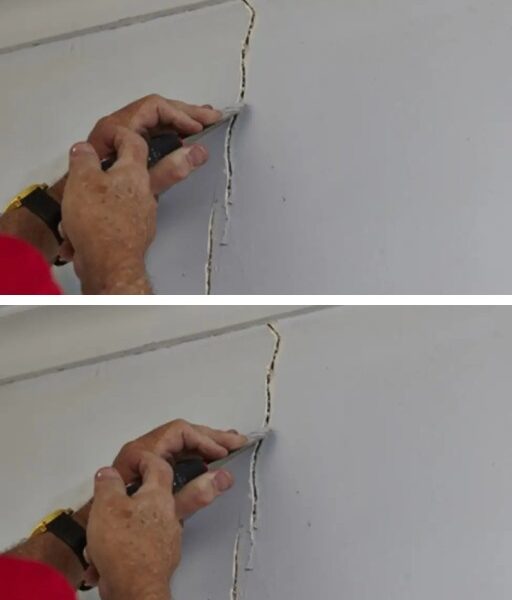Learn step by step how to close breaks and fissures in the walls
As the years go by, it is very common to see scratches and cracks in much of our house. These are very easy to repair, but first we have to know if it is a simple break, fissure or a crack.
When is it safe to repair a wall?
To know if it is in perfect condition to repair it yourself, you have to know there is a difference between scratches, fissures and cracks.
The tears are very small, approximately 1 centimeter deep. These barely affect the masonry, as they only occur in paint or plaster. These can be easily corrected with the step by step that we leave you below.

On the other hand, the cracks are scratches, but a little deeper. Approximately 1 to 3 centimeters, these are safe if rainwater, wind or street light do not pass through them. The problem is when they are close to the beams, columns or slabs, that is when you have to call a professional to make sure you do not cover up a structural problem that continues to worsen over time.
Now, the cracks can be more than 3 cm deep (which would be dangerous). These cannot be repaired like the previous two, since you could hide a serious problem that requires a professional solution.
Taking this into account, you can now think about repairing it yourself or calling a professional. If you choose the option to repair it yourself, then follow the following steps that I am going to leave you:
Materials
Rubber gloves
Protective Mask
Plastic lone
Sanding Paper
Smooth trowel (can be plastic or metal)
Spatula
Brush
Putty (or some similar product that is especially for these cases)
Procedure
- Place the tarp around the place where you are going to make the repair. This prevents the product from getting dirty and then having to spend hours cleaning the floor.
- To take care of your health, put on the protective mask and gloves.
- We grab the spatula and proceed (very carefully) to eliminate the small pieces that are loose inside the break.
- Then with the brush, we make sure to remove all the dust that remains. This helps the product adhere more easily.
- It is important that the place is very dry.
- We proceed to put the putty little by little until the inside of the break is well filled.
- With the smooth trowel, we proceed to pass all the putty over the break, leaving it very neat.
- Let it dry for 24 to 48 hours.
- After time, we use sandpaper to finish eliminating imperfections.
- Finally, you can now paint it with the color you have on the wall.
With just these simple steps, you have already solved this problem. If you see that it doesn’t fit you very well, you can continue practicing or call a professional.
